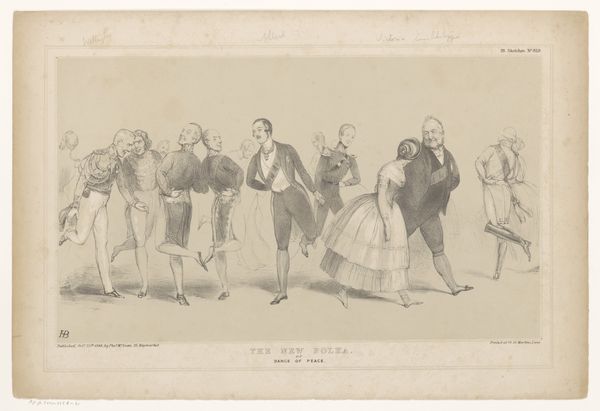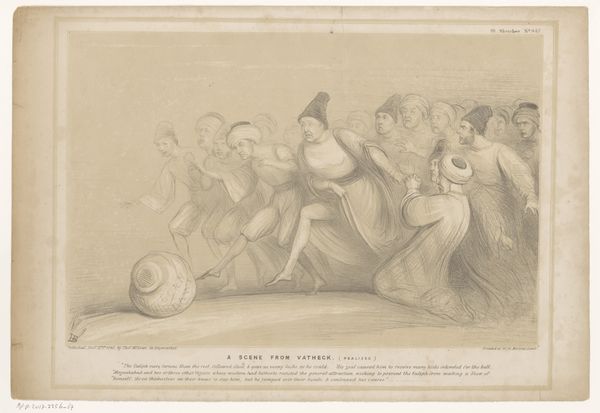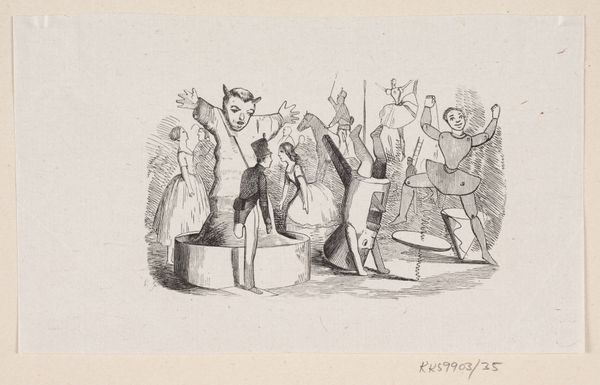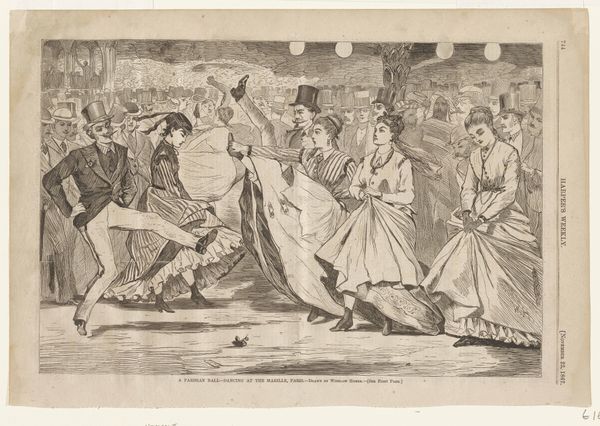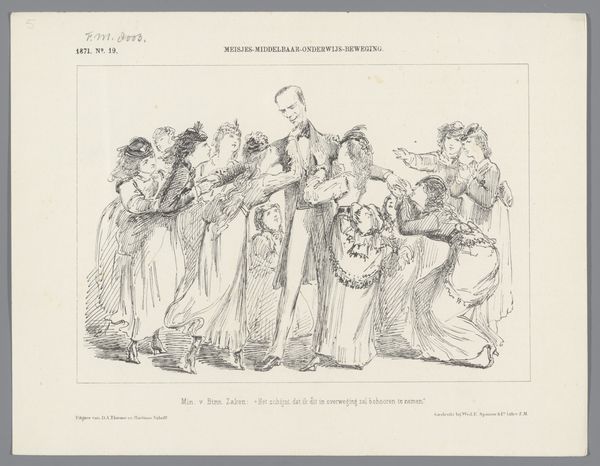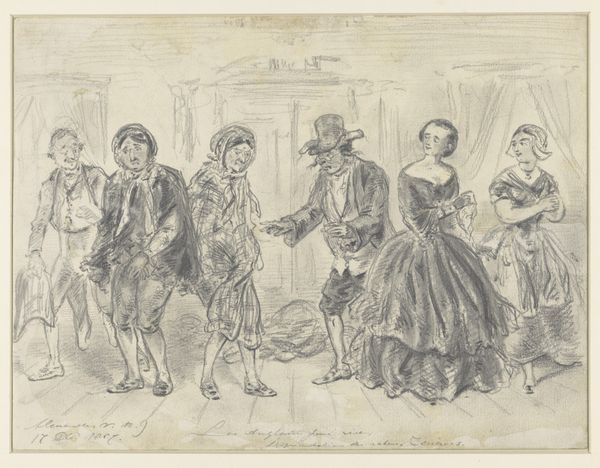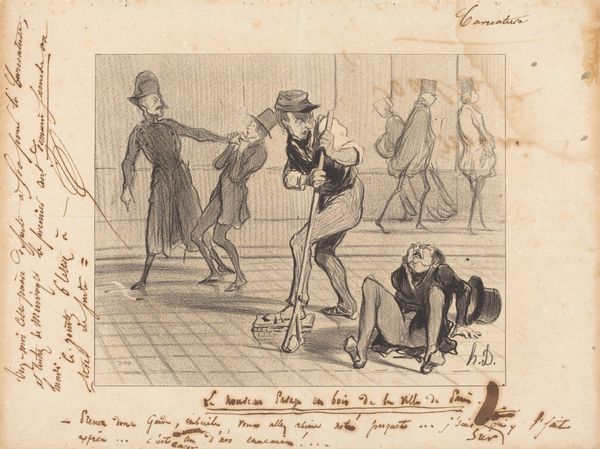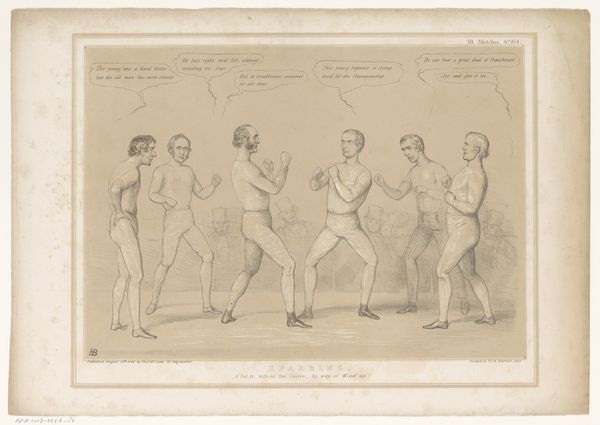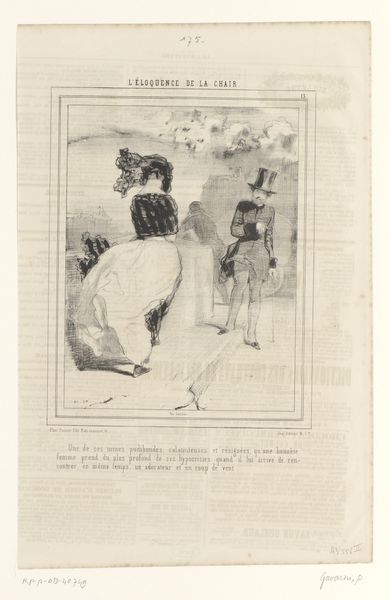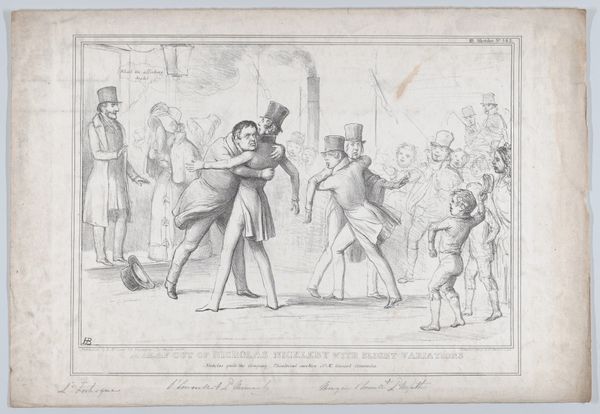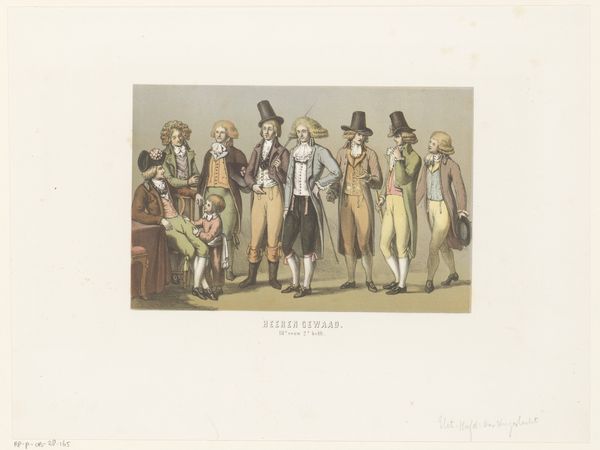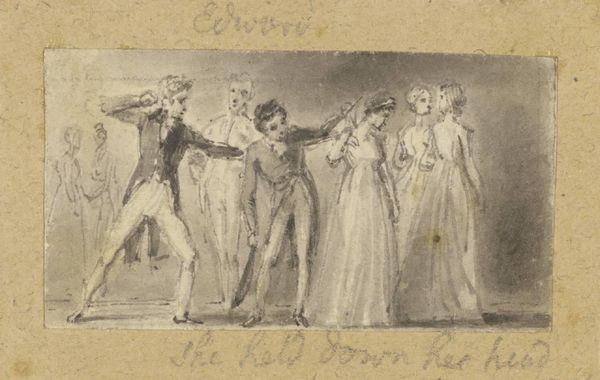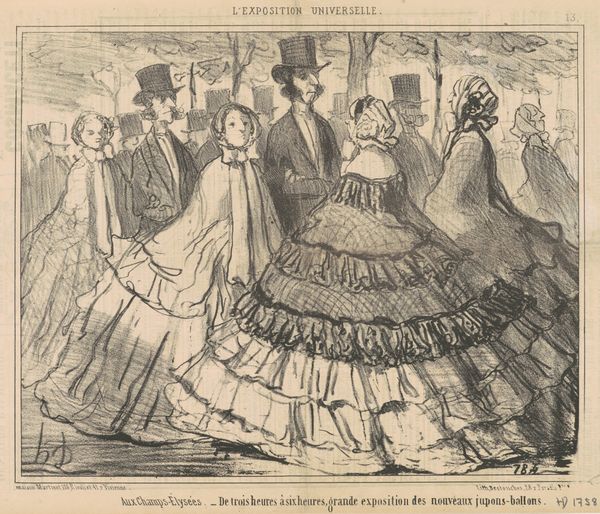
drawing, print, pencil
#
portrait
#
drawing
#
16_19th-century
#
narrative-art
# print
#
caricature
#
pencil sketch
#
figuration
#
romanticism
#
pencil
#
line
#
genre-painting
Dimensions: height 300 mm, width 445 mm
Copyright: Rijks Museum: Open Domain
This lithograph was made by John Doyle, and it offers a glimpse into English domestic politics. Lithography, unlike traditional forms of printmaking, relies on the chemical repulsion between oil and water. The artist draws directly onto a stone or metal plate with a greasy crayon, allowing for a more fluid and spontaneous mark. Here, Doyle uses this technique to create a scene that is both detailed and dynamic. You can see the fine lines and subtle gradations of tone that give the figures their volume and expression. The process itself is significant. Lithography, emerging in the early 19th century, democratized printmaking, making it more accessible for both artists and audiences. The medium allowed political commentary to be disseminated widely, influencing public opinion. In Doyle's hands, lithography becomes a tool for social critique. The image's power lies not only in its composition, but also in the means of its production and the context in which it was made. By understanding the materials, the making, and the context, we can appreciate the full meaning of Doyle's work.
Comments
No comments
Be the first to comment and join the conversation on the ultimate creative platform.
